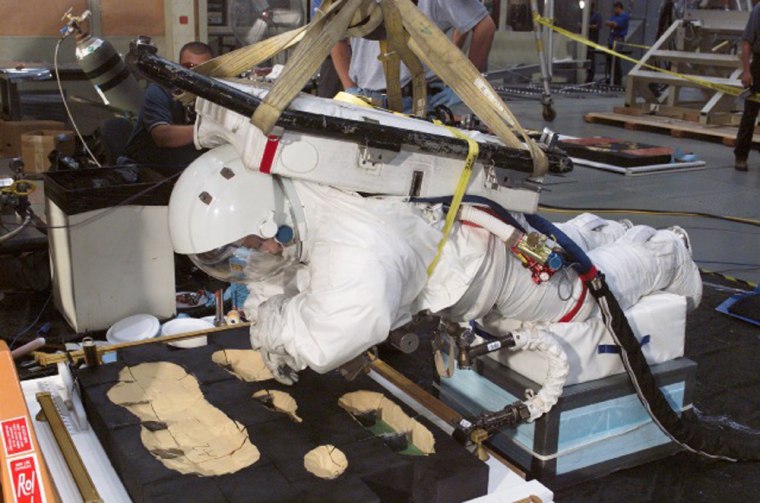When space shuttle flights resume, the astronauts will have putty and other filler to repair cracks and small gashes in the wings, but they will not be able to patch a hole as big as the one that doomed Columbia, NASA said Friday.
Michael Kostelnik, deputy associate administrator, said it is taking longer than expected to come up with a technique for wrapping a crater as big as the one gouged in Columbia’s wing by a chunk of foam last year.
Engineers also are behind in designing a boom for inspecting the belly of orbiting shuttles and the undersides of the wings, Kostelnik said. NASA hopes to have the boom ready for the first post-Columbia flight, still on track for next March. Kostelnik said NASA has yet to decide what it will do if the boom is not ready by then.
Discovery is scheduled to fly to the international space station and drop off badly needed supplies and replacement parts. The latest crew — an American and a Russian — has been aboard the space station since April.
Shuttle repair kits
The inspection boom would provide a 50-foot (15-meter) extension to the shuttle’s 50-foot robot arm, and hold a set of sensors and lasers for finding holes. It could reach most if not all of the thermal protective layer on the ship’s underside and possibly even support a spacewalking astronaut.
Discovery will be equipped with a puttylike material for filling any cracks in the wings, as well as plugs for holes up to 4 inches (10 centimeters) in size. But its crew will not be able to fix anything bigger than that in the leading edges of the wings, NASA said.
Columbia was brought down by a hole 6 to 10 inches (15 to 25 centimeters) in size in the leading edge of the left wing. The searing gases of re-entry entered the gash and melted the wing from the inside out, leading to the breakup of the shuttle over Texas on Feb. 1, 2003, and the deaths of all seven astronauts.
The task force overseeing NASA’s flight preparations has yet to approve the decision by top space agency managers to skip the wrap repair for now.
Shuttle program director Bill Parsons stressed that NASA is not giving up on the wrap concept and that engineers will press ahead in coming up with a solution for holes over 4 inches.
Focus on foam
But Kostelnik and Parsons said the main emphasis is on reducing the possibility of foam insulation coming off the external fuel tank during launch. NASA already has removed the foam from the area of the tank that shed a big piece during Columbia’s launch.
Kostelnik said NASA will not resume shuttle flights “unless we can assure ourselves that we will not shed a piece of debris that can damage the orbiter.”
The backup plan, at least for the first two flights, is to have a second shuttle ready to blast off for an emergency rescue. The crew of the damaged ship could wait at the space station for up to three months.
